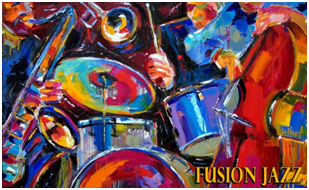

In the 1960s and 1970s, electronics played a major role in the ever-changing sound of jazz. While Free Jazz blew the doors off of pre-conceived rules and traditions, Jazz Fusion took the next step in making sense of the experimentation of the previous era. Jazz Fusion can be defined as the mixing or blending of any other genre of music with jazz to create a new sound and style. Rock and Roll, funk, rhythm and blues, and hip hop are just a few of the genres that Jazz Fusion artists utilized to create a new sound. Most Jazz Fusion artists returned to more traditional forms of compositions, which made this form of music easier to listen to and enjoy. The ground breaking efforts of the Free Jazz era allowed for Jazz Fusion artists to bring with them new instruments and sounds. For example, the use of electronic instrument amplification marked a huge shift in jazz performance. The electric bass, guitar, and piano began to replace their acoustic counterparts and the synthesizer began to help composers create countless sounds to enhance their musical compositions. Acoustic instruments are instruments that require no electricity to produce sound. An amplifier is an electronic device that picks up instrumental sounds and increases the volume. The synthesizer is a device that combines sound generators and sound modifiers in one package with a unified control system. Basically, it is a computer that makes different sounds! The first synthesizer was created in 1954 and slowly found its way into the mainstream music scene. Electronics in music greatly changed all genres of music during the 1960's and 1970's!

Acoustic Bass
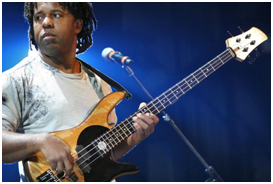
Electric Bass
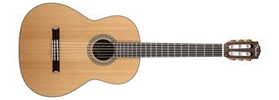
Acoustic Guitar
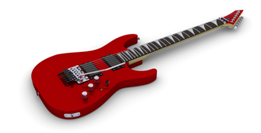
Electric Guitar
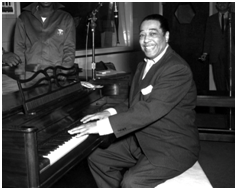
Acoustic Piano
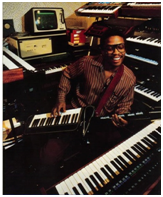
Electronic Keyboard

Synthesizer
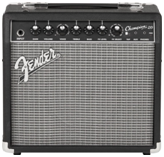
Amplifier
During the 1960's and 1970's, there was great deal of crossover between rock and roll and jazz, both genres borrowed musical ideas from each other and incorporated electronics into their music. One of the earliest groups to combine jazz and rock and roll was a band called the Free Spirits.
Suggested Listening: I’m Gonna Be Free – The Free Spirits
There are several well-known bands to have jazz foundations in their music. Although bands, such as the Doors, Blood Sweat and Tears, Chicago, and the Grateful Dead, are considered rock bands and not necessarily jazz bands, they borrowed heavily from developments in jazz throughout the preceding decades. Miles Davis, a leading performer of the Cool Jazz movement, was one of the first musicians to take a step into the Jazz Fusion world by borrowing rock and roll style beats and adding an electronic bass to his performances. He even experimented with amplifying his trumpet during performances causing a great deal of backlash from jazz traditionalists.
Suggested Listening: Tutu-Miles Davis
Another early group in the Jazz Fusion genre was a band named Weather Report. This group was considered to be on the cutting edge of innovation in Jazz Fusion.
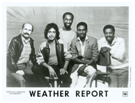
Weather Report formed in 1971 and was primarily a quintet of musicians throughout most of their existence. While they had several musicians fill in the rhythm section, the main members of the group where pianist, Joe Zawinul and saxophonist, Wayne Shorter. They were known for mixing rock rhythms with jazz ideas and amplifying their music with huge amplifiers and speakers. They were instrumental in helping jazz go electric and did so with great commercial success! Weather Report was able to successfully blend jazz improvisation, traditional pre-written music, and electronics together to become one of the most popular bands of the Jazz Fusion era.
Suggested Listening: Birdland-Weather Report
Another important composer of the early Jazz Fusion era was pianist Chick Corea.

(1941-2021)
Chick Corea came from a musical family and began playing at the age of four! He began his professional Career in New York playing in Cab Calloway’s band. He was greatly influenced by early Bebop artists, Dizzy Gillespie and Charlie Parker, and eventually, found his way into a band under the leadership of Miles Davis. During his time with Miles Davis, he was able to push the limits of the electronic keyboard and experiment with numerous styles of innovative performing. He would eventually go out on his own and continue to promote his style of Jazz Fusion with his new band entitled, “Return to Forever” which along with Weather Report would become two of the most important bands to Jazz Fusion.
Suggested Listening: Spain – Chick Corea
Chick Corea Mini Biography:

Below are additional educational resources and activities for this unit.
Unit 13 Jazz Fusion (Fill in the Blank) Worksheet
Unit 13 Cornell Notes Worksheet